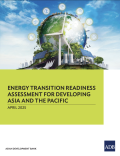
Transport is a major component of economic activity in and of itself and as a factor input to most other economic activities. However, CO2 emissions from energy use are still growing in many countries and worldwide, mainly due to increases in the transport and the energy sectors. GHG emissions from the transport sector increased until the latest recession. After falling from 2007, they were at about the same level in 2012 as in 2000 for most OECD countries (OECD, 2015).
Greening the transport sector can reduce congestion, air pollution, and improve wellbeing through better management and a shift away from fossil fuel combustion engines. It has the potential to create jobs through the development of public transport infrastructure and can help alleviate poverty by encouraging affordable transport and improving access to markets and other essential facilities.
Expert assistance on sustainable transportation policy is available for representatives of government agencies and to technical institutes supporting them through the LEDS Global Partnership Remote Expert Assistance on LEDS (REAL) service.
Relevance to SDGs
Sustainable Development Goal 11, specifically target 11.2, calls for sustainable transport and increased accessibility for all. In addition, SDG 9.1 calls for more reliable and resilient transport infrastructure.
SDG 9.1
Resilient Transport Infrastructure SDG 11.2
Sustainable Transport
The transport sector is responsible for nearly 25% of CO₂ emissions globally and a massive shift will be needed to transition to a low-carbon economy, including electrification of vehicles, low-carbon mass transport systems and greener replacements for aviation and shipping fuels.
Investments in transport infrastructure present a unique opportunity to meet both growing transport demand and development goals. Alongside the environmental benefits, sustainable transport can improve economic and social development by allowing people access to, among other things, jobs, markets, social interaction, and education.
According to the OECD, global investment needs for land transport infrastructure will reach USD 3 trillion by 2050. In an effort to address the infrastructure gap, governments are increasingly turning to the private sector to finance projects. Public-private partnerships (PPPs) are an effective way of transferring life-cycle costs of infrastructure off public-sector budgets and simultaneously creating investable, long-term, inflation-proof assets for the private sector.













